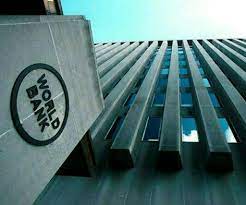F.P. Report
ISLAMABAD: Due to devastating effects of last year’s floods, worsening social problems, high inflation rate and policy uncertainty, the World Bank has predicted the growth rate of Pakistan’s economy to be two percent during the next financial year.
In its latest Global Economic Prospects report released yesterday, the World Bank said, “The long-term effects of the August 2022 floods in Pakistan, policy uncertainty and limited foreign exchange resources to pay for food, energy and imports have affected economic activity, resulting in a decline of about 25% in industrial production in the current financial year till March 2023.”
The report further said that in view of the declining foreign exchange reserves and stagnant remittances, the government increased the flexibility in the exchange rate, due to which the value of the Pakistani rupee has decreased by 20 percent since the beginning of the year.
According to the report, inflation is above the target in most countries and especially in Pakistan and Sri Lanka, limited foreign exchange reserves in some countries are limiting access to imported goods for production.
The report said that the increase in the policy rate in Pakistan has not been in line with the rate of inflation, as a result the actual rate of interest has become severely negative, which means that the World Bank wants the SBP to increase the policy rate further from the current level of 21 percent.
While poverty is rising in countries currently facing severe economic pressure, especially Afghanistan, Pakistan and Sri Lanka, it is feared that the trend of economic decline in these areas, which stopped in 2020-21, will resume.
However, the decline will not be as sharp as previously feared in view of the high rate of inflation, slowing employment recovery and the impact of stopping food aid, the number of people earning less than $3.65 a day in South Asia in 2023 is likely to be much lower than the increase caused by the Corona epidemic in 2020.
The World Bank said import restrictions imposed by several countries (Bangladesh, Nepal, Pakistan, Sri Lanka) severely impacted economic activity, which has been eased as external imbalances have improved and exchange rate pressures have eased. is likely.
According to the report, some countries in South Asia (Afghanistan, Pakistan and Sri Lanka) have faced severe economic shocks due to internal crises, due to which their development is being damaged.
The report said that due to the devastating effects of floods in Pakistan last year, worsening social problems, high inflation rate and policy uncertainty, the growth rate during the current financial year was 0.4 percent, which is 1.6 percent-point less than the growth rate in January, while according to the government, the growth rate during the current financial year has been 0.3 percent.
More than half of South Asia has been affected by natural disasters once or more in the past two decades, with the 2022 floods in Pakistan submerging one-third of the country and causing a loss of 4.8% of GDP, the report said.
The report predicts that the region’s overall growth rate will slow marginally to 5.9 percent during 2023 and to a clear decline to 5.1 percent in 2024.







